The pepper hotness scale, also known as the Scoville Scale, measures the spiciness of chili peppers using Scoville Heat Units (SHU), ranging from 0 for bell peppers to over 2.2 million for the Carolina Reaper. This guide explains how the scale works, ranks the hottest peppers, and provides practical cooking tips for all heat levels.
Table of Contents
- What Is the Scoville Scale?
- How SHU Measures Heat
- Top 10 Hottest Peppers Ranked by SHU
- Pepper Heat Level Chart
- Safe Cooking with Hot Peppers
- Choosing the Right Pepper
- Frequently Asked Questions
- Conclusion
What Is the Scoville Scale?
Developed in 1912 by pharmacist Wilbur Scoville, the Scoville Scale quantifies pepper heat through Scoville Heat Units (SHU). It measures how much sugar water is needed to dilute capsaicin (the compound causing spiciness) until heat is undetectable. Modern testing uses high-performance liquid chromatography for precise SHU measurements.
| Pepper Type | SHU Range | Heat Level |
|---|---|---|
| Bell Pepper | 0 SHU | Mild |
| Jalapeño | 2,500–8,000 SHU | Medium |
| Habanero | 100,000–350,000 SHU | Very Hot |
| Ghost Pepper | 1,000,000+ SHU | Extremely Hot |
| Carolina Reaper | 2,200,000+ SHU | World's Hottest |

How SHU Measures Heat
Capsaicin concentration determines SHU values. Higher SHU = more capsaicin. Key facts:
- 0 SHU: Bell peppers (no capsaicin)
- 2,500–8,000 SHU: Jalapeños (common in salsas)
- 100,000–350,000 SHU: Habaneros (fruity but intense)
- 2.2M+ SHU: Carolina Reaper (officially hottest pepper)
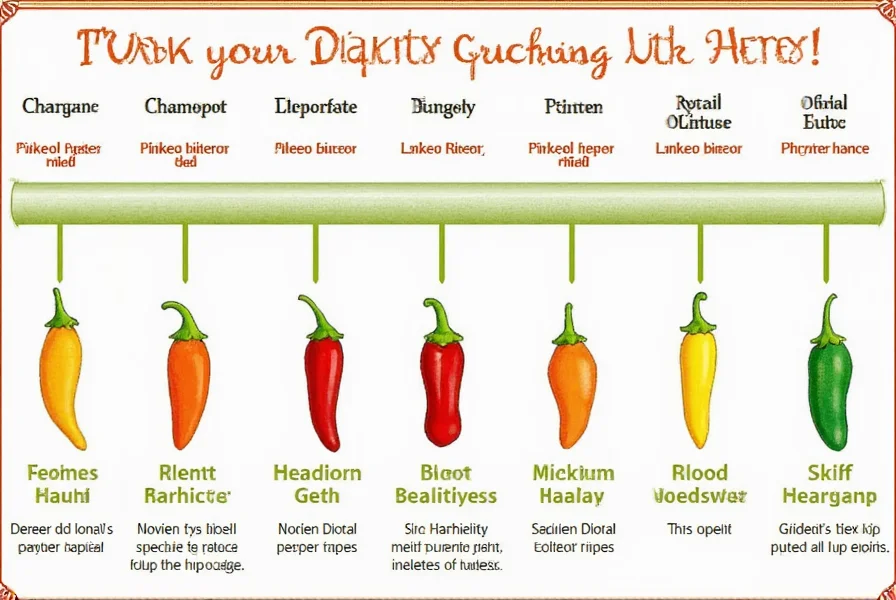
Top 10 Hottest Peppers Ranked by SHU
| Rank | Pepper Name | SHU Range |
|---|---|---|
| 1 | Carolina Reaper | 2,200,000+ |
| 2 | Trinidad Moruga Scorpion | 2,000,000+ |
| 3 | Naga Viper | 1,400,000 |
| 4 | Ghost Pepper (Bhut Jolokia) | 1,041,427 |
| 5 | 7 Pot Douglah | 920,000 |
| 6 | Chocolate 7 Pot | 850,000 |
| 7 | 7 Pot Primo | 800,000 |
| 8 | Scotch Bonnet | 350,000 |
| 9 | Hatch Green Chile | 10,000–30,000 |
| 10 | Serrano Pepper | 10,000–23,000 |
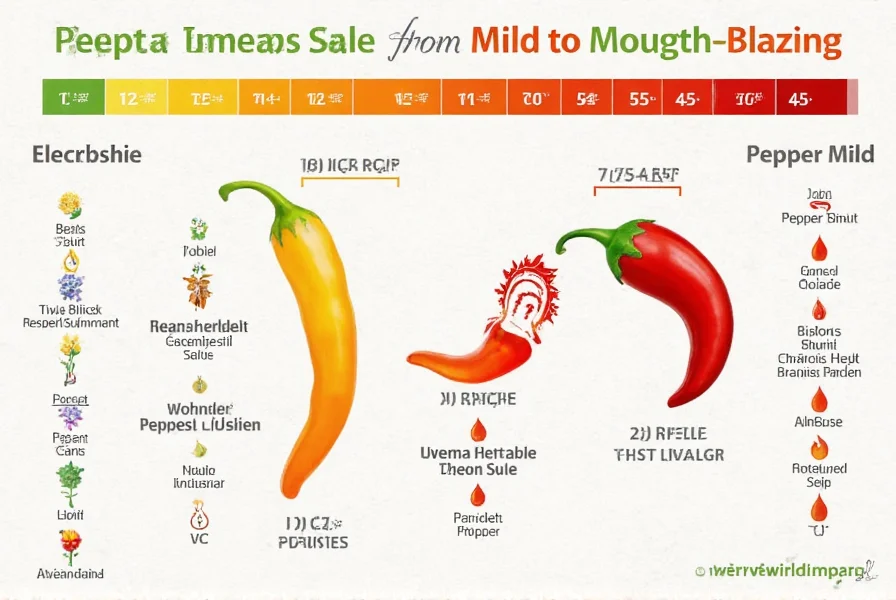
Pepper Heat Level Chart
Visual guide to pepper heat categories:
- Mild (0–1,000 SHU): Bell pepper, Poblano
- Medium (1,000–30,000 SHU): Jalapeño, Serrano, Anaheim
- Hot (30,000–100,000 SHU): Cayenne, Thai chili
- Very Hot (100,000–1,000,000 SHU): Habanero, Scotch Bonnet
- Extremely Hot (1,000,000+ SHU): Ghost Pepper, Trinidad Scorpion, Carolina Reaper

Safe Cooking with Hot Peppers
Essential safety and cooking techniques:
- Wear nitrile gloves when handling peppers above 100,000 SHU
- Remove seeds and membranes to reduce heat by 50-80%
- Use dairy (milk, yogurt) to neutralize capsaicin
- Never touch eyes after handling hot peppers
- Roast peppers for deeper flavor without increasing heat
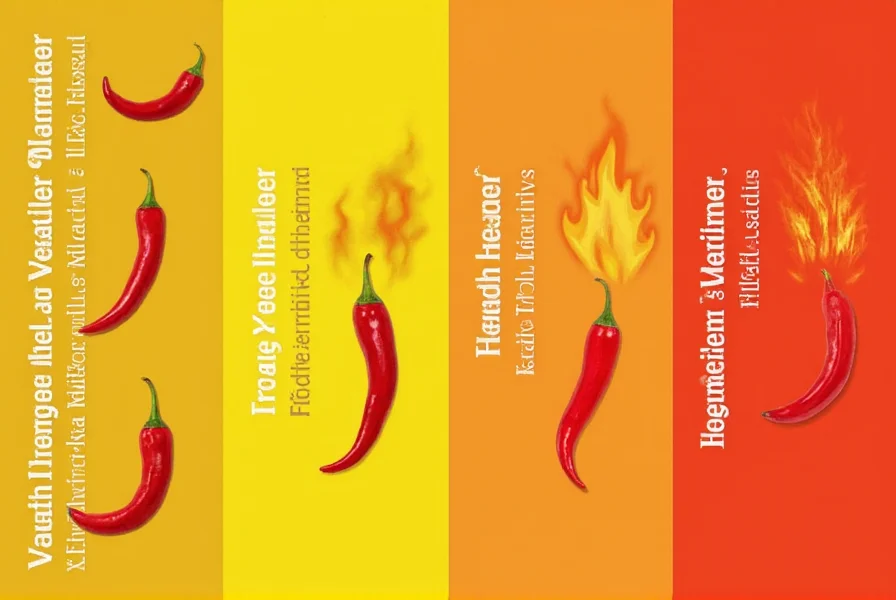
Choosing the Right Pepper
| Pepper | SHU | Best For | Cooking Use |
|---|---|---|---|
| Bell Pepper | 0 | Beginners | Salads, stir-fries |
| Jalapeño | 2,500–8,000 | Home cooks | Salsas, nachos |
| Habanero | 100,000–350,000 | Flavor explorers | Hot sauces, Caribbean dishes |
| Carolina Reaper | 2,200,000+ | Heat enthusiasts | Spice challenges, specialty sauces |
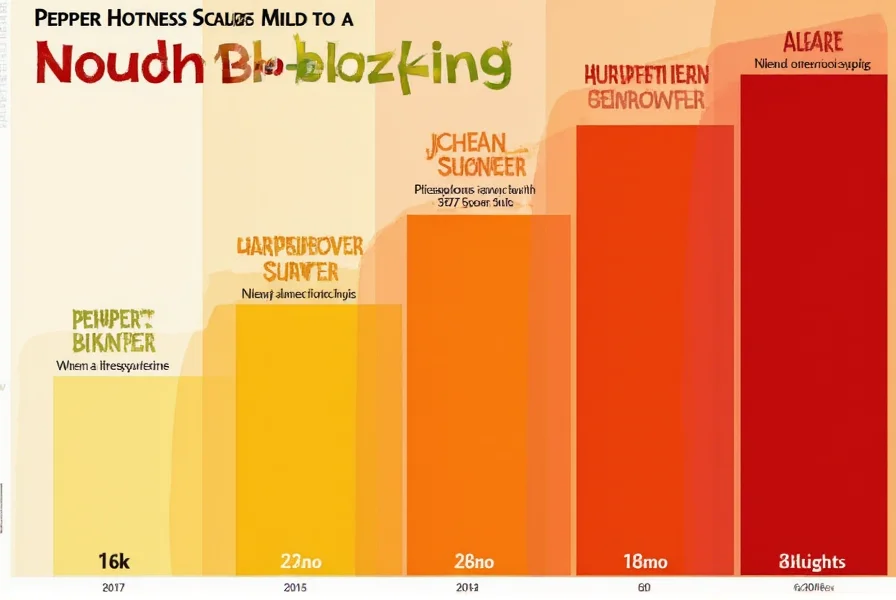
Frequently Asked Questions
What's the difference between Scoville Scale and SHU?
The Scoville Scale is the measurement system, while SHU (Scoville Heat Units) are the specific numerical values assigned to peppers on that scale. SHU is the unit of measurement, similar to inches for length.
How can I safely handle Carolina Reaper peppers?
Always wear nitrile gloves (not latex), use safety goggles, work in a ventilated area, and avoid touching your face. Clean all surfaces with soapy water after handling. Never use water to wash capsaicin off skin—use alcohol-based cleaners.
Why do peppers of the same variety have different heat levels?
Heat varies due to growing conditions (soil, temperature, water stress), plant genetics, and ripeness. Even on the same plant, individual peppers can vary by 20-50% in SHU. This is why ranges are used rather than exact numbers.
Does cooking affect pepper heat?
Cooking doesn't destroy capsaicin (stable up to 400°F/204°C), but it distributes heat evenly. Acidic ingredients like tomatoes increase perceived heat, while dairy and fats reduce it. Roasting enhances flavor complexity without increasing SHU.
How to relieve pepper burn?
Dairy (milk, yogurt) is most effective due to casein binding capsaicin. Sugar or honey helps counteract heat receptors. Avoid water—it spreads capsaicin. For skin burns, use rubbing alcohol or high-proof spirits to dissolve oils.
Can spicy peppers damage my stomach?
For healthy individuals, capsaicin doesn't damage tissue—it only triggers pain receptors. However, those with ulcers, IBS, or acid reflux may experience worsened symptoms. Build tolerance gradually if sensitive.
What's the safest extremely hot pepper to eat?
All peppers are safe in moderation, but peppers above 500,000 SHU require caution. The Carolina Reaper (2.2M SHU) is the hottest legally sold pepper and has been safely consumed by many, though rare cases of headaches or digestive issues occur.
Does heat level indicate flavor quality?
No. Heat and flavor are separate characteristics. Mild peppers like poblanos have rich, smoky flavors, while some super-hots like ghost peppers offer complex smoky notes. The best peppers balance heat with nuanced flavor profiles.
Conclusion
Understanding the Scoville Scale empowers you to confidently select peppers for any dish. Whether you're a beginner exploring mild flavors or a heat enthusiast chasing extreme challenges, this knowledge ensures perfect spice levels every time. Remember: spice is personal—start low, respect the burn, and enjoy the journey through nature's most exciting flavor spectrum.


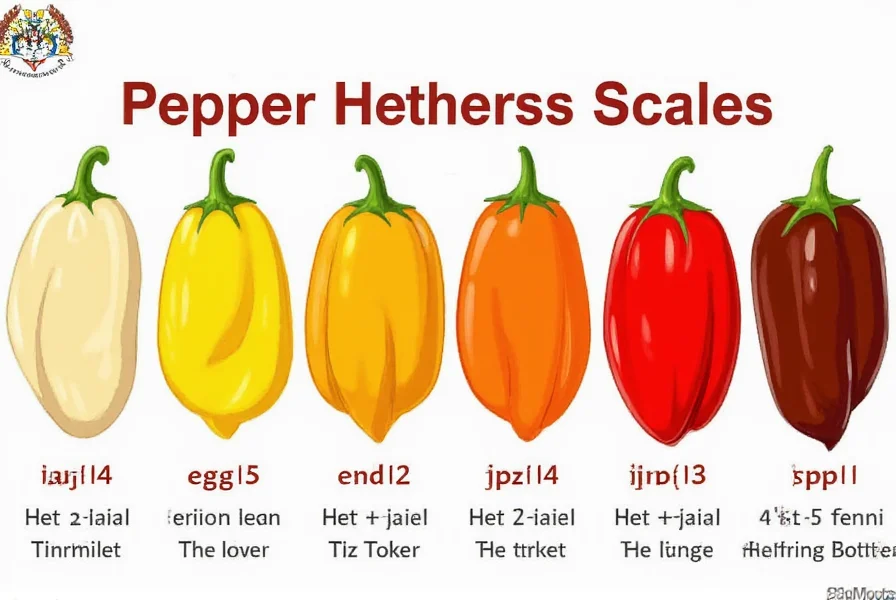









 浙公网安备
33010002000092号
浙公网安备
33010002000092号 浙B2-20120091-4
浙B2-20120091-4